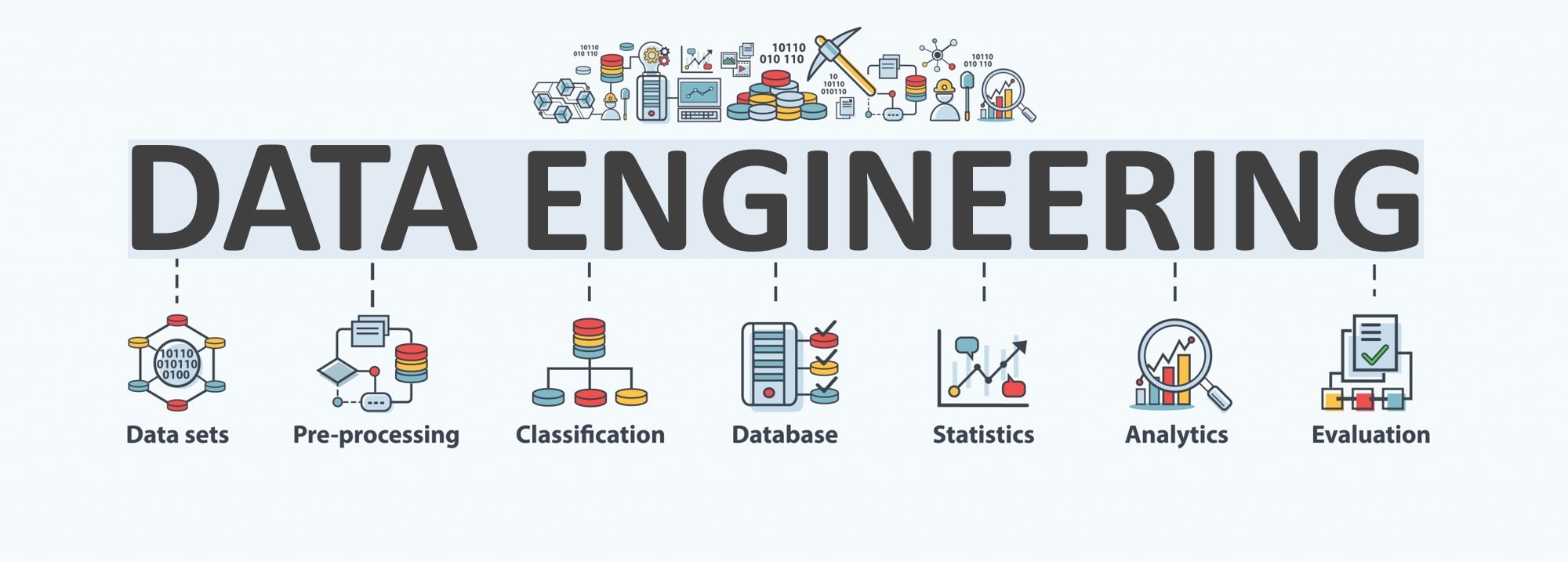Introduction
Data has become a crucial thing for every industry. From e-commerce to healthcare, from finance to entertainment, organizations rely on data to drive decision-making, gain insights, and innovate. However, the mere volume, variety, and velocity of data generated present unique challenges. Therefore, enter the data engineering domain because it is a crucial discipline that focuses on the collection, storage, processing, and analysis of data. However, to learn the technology essential for this domain one needs to pursue a Data Engineering Course.
Building Blocks of Data Engineering
-
Data Ingestion: The journey of data engineering begins with data ingestion. It is the process of collecting data from different sources. So, this could include databases, APIs, logs, files, sensors, or even social media feeds. Moreover, data engineers use various techniques such as batch processing, stream processing, and change data capture to capture data in real time or at scheduled intervals.
-
Data Storage: Once the data is ingested, it needs a place to reside. So, data storage solutions come in various forms, including relational databases, NoSQL databases, data warehouses, and data lakes. Moreover, each type of storage has its strengths and use cases. Therefore, relational databases are ideal for structured data with complex relationships. While data lakes excel at storing unstructured or semi-structured data at scale.
-
Data Processing: After storage, the next step is data processing—transforming raw data into a usable format for analysis and insights. So, data processing involves tasks such as cleaning, aggregating, enriching, and denormalizing data. Furthermore, technologies like Apache Spark, Apache Flink, and Apache Beam are commonly used for distributed data processing. Thus, enabling parallel execution and fault tolerance.
-
Data Orchestration: Data engineering pipelines often involve complex workflows with multiple stages of processing. Therefore, data orchestration tools like Apache Airflow, Luigi, and Prefect help manage these workflows by defining dependencies, scheduling tasks, and monitoring execution. So, they enable data engineers to create repeatable and scalable data pipelines that ensure data integrity and reliability.
-
Data Governance and Security: As data volumes grow, ensuring data governance and security becomes paramount. Data governance involves defining policies and procedures for data management, metadata management, and data quality assurance. Additionally, data security encompasses measures such as encryption, access control, and compliance with regulatory requirements like GDPR and CCPA. Furthermore, data engineers play a crucial role in implementing robust data governance and security measures to protect sensitive information.
Best Practices in Data Engineering
-
Modularity and Reusability: Design data pipelines with modularity and reusability in mind. Further, breaks down complex pipelines into smaller, composable components that can be easily tested, debugged, and reused across different projects.
-
Scalability and Performance: Build scalable and performant data pipelines that can handle growing data volumes and processing demands. Moreover, use distributed computing frameworks and cloud services to scale horizontally and vertically as needed.
-
Monitoring and Logging: Implement comprehensive monitoring and logging for data pipelines to track performance, detect anomalies, and troubleshoot issues in real time. Additionally, use tools like Prometheus, Grafana, and ELK stack to collect metrics, visualize data, and generate alerts.
-
Automated Testing: Adopt automated testing practices to ensure the reliability and correctness of data pipelines. So, write unit tests, integration tests, and end-to-end tests to validate data transformations, data quality, and pipeline dependencies.
-
Documentation and Collaboration: Document data pipelines, schemas, and dependencies to facilitate collaboration and knowledge sharing among team members. Therefore, use version control systems like Git to track changes and manage the codebase effectively.
-
Continuous Integration and Deployment (CI/CD): Implement CI/CD pipelines to automate the build, test, and deployment of data engineering artifacts. However, integrates with version control, code review, and issue-tracking systems for seamless workflow management.
-
Cost Optimization: Optimize data engineering workflows for cost efficiency by right-sizing resources. Hence, leveraging serverless architectures, and optimizing data storage and processing configurations.
Conclusion
Data engineering forms the foundation upon which data-driven organizations succeed. So, by mastering the building blocks of data engineering and adhering to best practices, organizations can harness the power of data to drive innovation, gain competitive advantage, and deliver value to customers. One must choose the Best Certifications For Data Engineers to learn all the skills and technologies required properly. However, by adopting the principles of scalability, reliability, and efficiency, data engineers pave the way for a future where data is not just a byproduct of business operations but a strategic asset driving growth and success.




